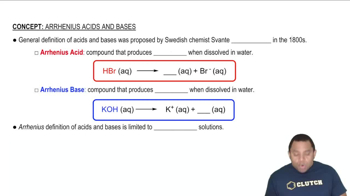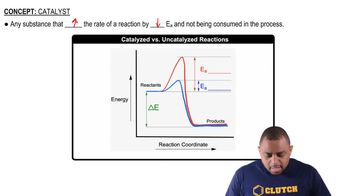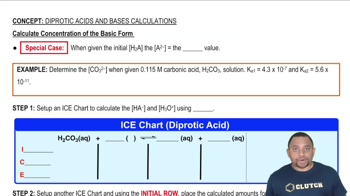Here are the essential concepts you must grasp in order to answer the question correctly.
Acid-Base Chemistry
Acid-base chemistry involves the study of proton donors (acids) and proton acceptors (bases). In aqueous solutions, acids release H+ ions, while bases produce OH- ions. Understanding the behavior of these ions is crucial for predicting how they influence reaction rates and mechanisms, particularly in acid-catalyzed reactions.
Recommended video:
Arrhenius Acids and Bases
Catalysis
Catalysis refers to the process by which the rate of a chemical reaction is increased by a substance called a catalyst, which is not consumed in the reaction. In this context, H+ ions act as a catalyst by providing protons that facilitate the reaction without being permanently altered, thus affecting the concentration profile of H+ over time.
Recommended video:
Catalyzed vs. Uncatalyzed Reactions
Concentration Profiles
A concentration profile illustrates how the concentration of a particular species changes over time during a reaction. In this scenario, measuring the [H+] concentration as a function of time will show an initial increase due to the added acid, followed by a potential decrease as the reaction proceeds, reflecting the dynamic nature of the acid-catalyzed process.
Recommended video:
Calculate Concentration of the Basic Form
 Verified step by step guidance
Verified step by step guidance

